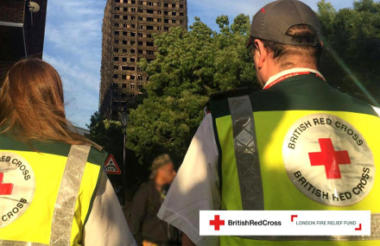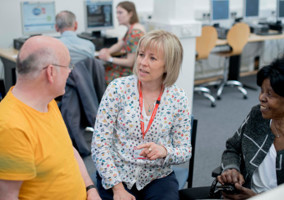The British Red Cross is poised to embark upon a new ten-year strategy, which will focus on a smaller number of areas and be more collaborative, its chief executive has said.
In an interview with Civil Society News, Mike Adamson, chief executive of the British Red Cross, said: “What we realised is that we need to think longer term because the issues we’re trying to tackle are enduring humanitarian issues, and we won’t find solutions to them in a three-to-five-year business-plan context.”
Trustees are expected to sign off on the ten-year strategy, which will take the charity through to 2030, by the end of the year.
Adamson says the plan is to be “focusing on a small number of big causes”. These are:
- People in emergencies.
- People who are displaced.
- People who are falling between the gaps in the health and social care system.
In doing so the charity believes it will be focusing on the areas of greatest unmet need and where it has expertise. It also intends play a convening role because it knows it cannot fulfil its mission alone.
The British Red Cross has already made progress on forging better links with national and local bodies, and has set up Voluntary Community Sector Emergency Partnership, involving St John Ambulance, Victim Support, Muslim Aid, UK Community Foundations, NAVCA and NCVO as well as representatives from government departments and local authorities.
“We’ve learned a huge amount from our experience at Grenfell,” he said, where the Red Cross was instrumental in coordinating the response and support for survivors. However, he said, “we also recognise that we were connected nearly well enough to a whole host of both national organisations and local community organisations”.
The key to this collaborative way of working is to do so “with humility”, he said.
Funding pressure
In common with other large charities, the British Red Cross faces pressures on its funding.
In the year to December 2018, the charity had a total income of £243m but regular giving has fallen from around £50m in 2014 to £40m last year.
“General funds income of many charities is under real pressure,” he said, “and we’re no exception to that.”
This means the charity has decided to end its loss-making service providing first aid at public events. Some staff are at risk of redundancy, but through a consultation process Adamson hopes to redeploy them.
Carbon neutral by 2025
Adamson also set out an expectation that the charity would be carbon neutral by 2025, “in order to be credible”.
This means reducing travel, using few resources and using technology effectively.
|
Related articles












